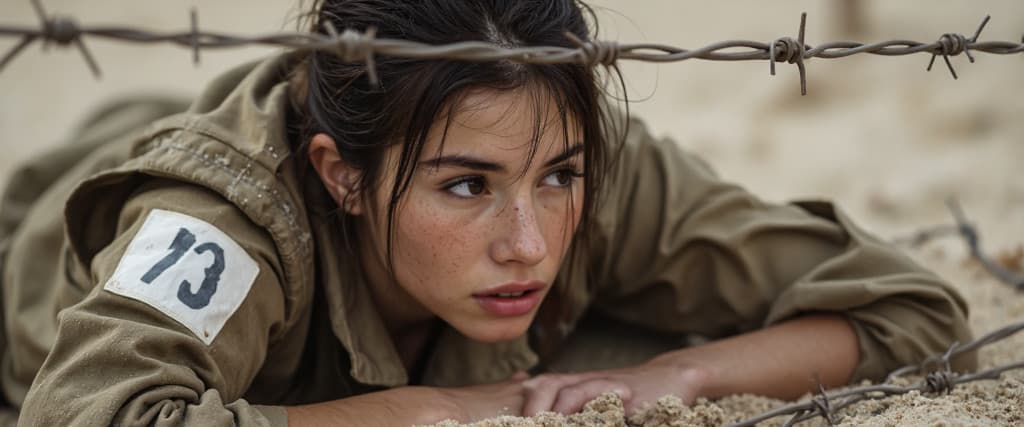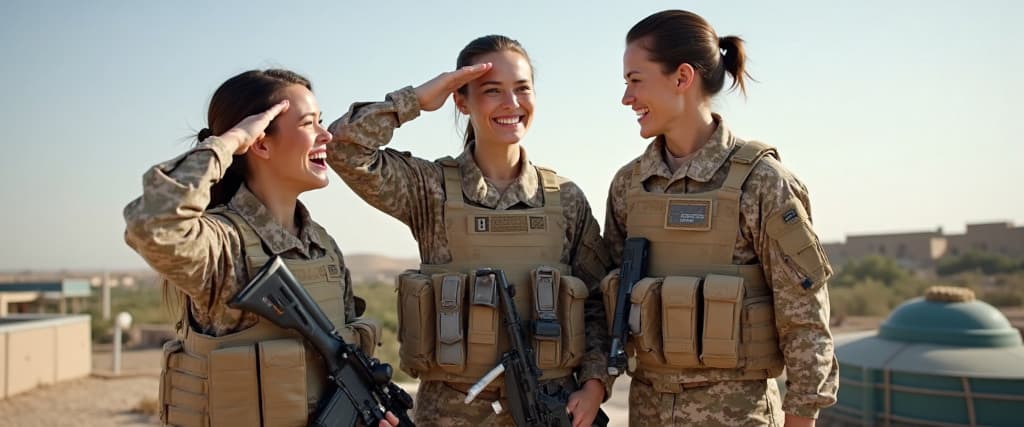
If men are required or allowed to serve and defend their country, then women — who are just as capable of making that decision — should be given the same right. Equality doesn’t just mean access to the workplace or the vote — it also includes the tough stuff, like military service. In fact, many ladies actively choose to serve, and some even outperform men in critical roles like intelligence, piloting, or field medicine. Some argue female soldiers shouldn’t be sent into combat zones because they may face greater risks — like assault, trauma, or physical strain. Others bring up concerns about unit cohesion or morale. It’s a bit of a “protect the ladies” mindset, which may sound noble. But the question isn’t just “Should women be in war?” — it’s also “Should anyone be in war?” If your deeper concern is the horror of armed conflict, then the gender of the people fighting is just one part of a much bigger conversation about humanity, politics, and violence.
But let’s get back to female soldiers and what countries are leading in this. Here’s a quick list of countries where they serve in significant numbers, across combat and non-combat roles:
- Israel – Mandatory service for most women.
- USA – They make up about 17% of the active-duty military. Combat roles? All open.
- Ukraine – Women have been on the front lines since long before the 2022 war. Think snipers, tank crews, medics.
- South Africa – Post-apartheid reforms opened the military fully to women. Representation in leadership? Better than you might guess.
- Hungary & Moldova – Eastern Europe’s quietly progressive duo. Both countries integrate them in a wide range of roles.
- North Korea – Believe it or not, women are part of the military machine. But don’t romanticize it — this is more about regime control than empowerment.
- Australia & New Zealand – These countries don’t just “allow” female soldiers in; they actively recruit them for elite roles. G’day, equality.
How Many of Them Are in the Military Today?
Estimates put the number somewhere between 2 to 3 million. The actual stat is tough to pin down (different countries, different reporting standards), but one thing’s for sure — more females are signing up, and not just for desk jobs.
What Challenges Do Women Face in the Military?
So here’s where it gets real. It’s not all bootcamp montages and camaraderie. Women in the military face:
- Sexual harassment and assault. Still a massive issue, even in Western militaries.
- Promotion gaps. You can serve — but can you lead? Often, it’s a longer climb.
- Cultural resistance. Especially in conservative or traditionally male-dominated forces.
- Equipment and uniforms. Fun fact: many “standard issue” kits are designed for male bodies.
Let alone maternity leave policies or field hygiene solutions.
How Do Physical Fitness Standards Differ for Men and Women in the Military?

Ah, the age-old debate: should women have the same push-up requirements as men?
In many militaries, physical standards do differ by gender and age. Think fewer required pull-ups or longer time allowances on runs for women. Why? Because biology’s not fake — on average, men have more muscle mass and upper-body strength.
Standard Combat Training Test (for infantry candidates):
- Push-ups (2 minutes):
- Men: ~35–45
- Women: ~20–30
- Men: ~35–45
- Sit-ups (2 minutes):
- Men: ~50–60
- Women: ~40–50
- Men: ~50–60
- 2,000 meter run (1.24 miles):
- Men: ~9:00–9:30 minutes
- Women: ~10:30–11:30 minutes
- Men: ~9:00–9:30 minutes
- Loaded March (with gear):
- Men: 10–15 km with ~20–25 kg pack
- Women: 6–10 km with lighter gear
- Men: 10–15 km with ~20–25 kg pack
These are not official public benchmarks (the IDF doesn’t publish exact numbers for all roles), but they’re based on reports from soldiers, prep courses, and interviews with IDF fitness instructors.
And it’s worth noting that many elite units are moving toward gender-neutral standards — you either meet the bar, or you don’t.
Are There Female Special Forces Soldiers?
Yes — but it depends on what you mean by “special forces.” In the U.S., women have passed elite courses like Army Ranger School and the Navy’s SWCC program (Special Warfare Combatant-Craft Crewman). However, as of now, no woman has completed Navy SEAL training — which is still one of the toughest pipelines in the military world.
In Israel, women serve in elite roles — including intelligence, sniper units, and combat battalions like Caracal and Bardelas. In France, the GIGN (an elite counterterrorism force) includes trained female operators. Other countries — like Canada and Norway — have opened special operations roles to women, and some have already made it through. So yes, females are showing up in special forces.
Future Prospects
After all, militaries worldwide are increasingly acknowledging that diverse units tend to perform more effectively, adapt more rapidly to complex environments, and better mirror the societies they serve. Plus, empirical evidence and operational experience have demonstrated that female soldiers are fully capable of meeting the physical and psychological demands. While the complete transformation of military gender dynamics remains a work in progress, current geopolitical conflicts suggest that the inclusion of women is not just a symbolic gesture, but a strategic necessity shaping the future composition of armed forces.